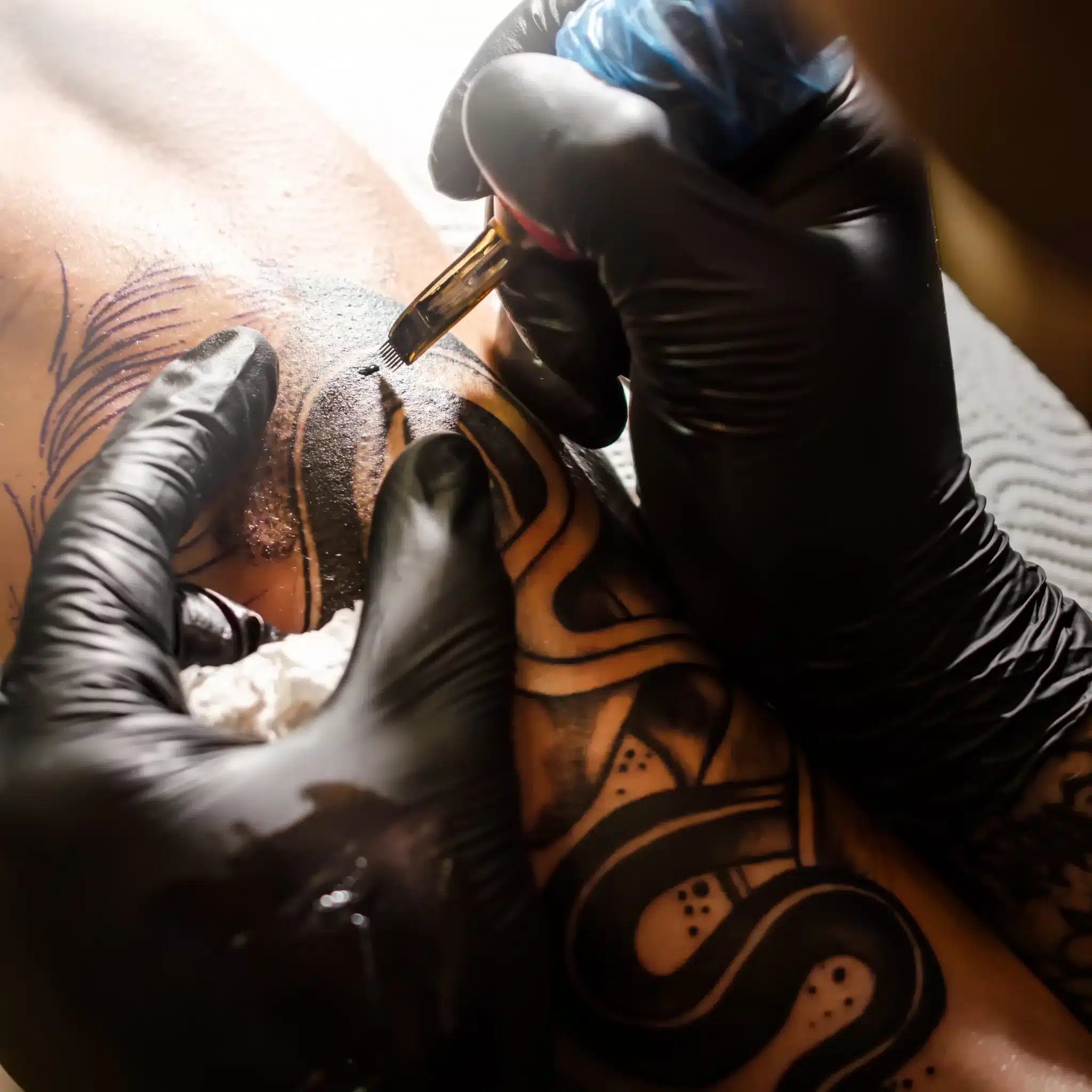Numbing Cream Tattoo
Numbing Cream For Tattoos
From intricate tattoos and ear piercings to medical procedures like injections, numbing cream has become an indispensable tool to alleviate pain and discomfort. In this comprehensive guide, we’ll delve into the various uses of numbing cream, its effectiveness, different types available, and essential considerations when choosing the best numbing cream for your specific needs.
WHO NEEDS TO USE NUMBING CREAM WHEN GETTING A TATTOO
Below are our suggestions on cases where you should consider using Numbing Cream when getting a tattoo.
- People with a low pain threshold: Those who cannot tolerate pain well or feel uncomfortable with the sensation may turn to numbing cream to ease the discomfort.
- People who are anxious or afraid of needles: Individuals who have a fear of needles or experience anxiety about getting tattooed can use numbing cream to calm their nerves.
- First-time tattoo clients: Those who are new to the art of tattooing might want to use numbing cream to make their initial experience less daunting.
- People getting tattoos in sensitive areas: Some body parts are particularly sensitive to pain when tattooed, such as wrists, ankles, lower back, or rib cage.
- People getting large or complex tattoos: Large or intricate tattoos that take many hours can be more bearable with the use of numbing cream through the lengthy process.
- Individuals with specific health conditions: Some people may need to minimize pain during skin procedures due to certain health conditions.

MAIN INGREDIENTS IN NUMBING CREAM
The main active ingredients typically found in numbing creams used for tattoos are:
- Lidocaine: An anesthetic that helps to numb the skin.
- Prilocaine: Another common anesthetic used for skin numbing.
- Benzocaine: Often used for pain relief on the skin surface.
- Tetracaine: A potent anesthetic that is sometimes included in numbing products.
These ingredients may be found alone or in combination, and they work by temporarily blocking the pathway of pain signals along nerves. Always follow the specific instructions provided with the numbing cream and consult with a professional before use to ensure safety, especially since different brands and formulations may vary in concentration and recommended usage.
HOW NUMBING CREAM WORKS ?
Numbing creams, also known as topical anesthetics, are formulated to temporarily block pain signals transmitted from the skin to the brain. The active ingredients in numbing creams work by interfering with the function of sodium channels, which play a crucial role in the transmission of electrical signals responsible for pain sensation. This local anesthetic effect alleviates pain, making it an effective choice for a variety of procedures and everyday scenarios.
Numbing Cream Applications
- Tattooing: Numbing cream is widely used during tattooing sessions to minimize pain and discomfort. Its topical application helps numb the skin, allowing the tattoo artist to work with greater precision and reducing the unpleasant sensations experienced by the client.
- Waxing: Numbing cream can be applied prior to waxing to mitigate the pain associated with hair removal. It is especially helpful for sensitive areas such as the bikini line or underarms.
- Ear Piercing: Numbing cream can also be used before getting your ears pierced to reduce the pain and discomfort. This is particularly useful for children or individuals with a low pain tolerance.
Numbing Cream for Tattoos
Getting a tattoo can be a painful experience, but numbing cream can make the process more bearable. There are various numbing creams specifically designed for tattooing, and they come in different forms such as gels, sprays, and creams. These creams are typically applied 30-45 minutes before the tattooing process and can last for up to two hours.
It is recommended to apply a thick layer of the cream and cover it with plastic wrap to enhance its effectiveness. Other popular options include “TKTX Gold” and “Mithra Plus,” both of which have a higher concentration of lidocaine (10%) and can provide longer-lasting numbness.
WHAT KINDS OF ANESTHESIA ARE THERE FOR TATTOOS?
There are several types of anesthesia that can be considered for tattoos, although they are not commonly used for typical tattoo sessions. Here are the options:
Topical Anesthetics
- Numbing Creams: Over-the-counter or prescription creams that contain lidocaine, benzocaine, or tetracaine.
- Numbing Sprays: Applied during and after the tattoo process to ease the pain.
Local Anesthetics
- Lidocaine Injections: Can be administered by a healthcare professional to numb a small area.
Numbing sprays are widely used in various medical settings, including dental offices for procedures like tooth extractions or deep cleanings, and in hospitals for minor surgical procedures or to prepare a patient’s skin before inserting needles. They are also employed in cosmetic procedures to reduce discomfort during treatments such as laser hair removal, tattoo application, and piercing.
Additionally, numbing sprays can be found over-the-counter for personal use to provide relief from minor skin irritations, sunburns, insect bites, and minor cuts or scrapes. They are appreciated for their ease of application and rapid onset of action.
When using a numbing spray, it’s important to follow the instructions carefully and to be aware of potential side effects such as redness, itching, or allergic reactions. It’s also crucial not to use the spray on large areas of the skin or for prolonged periods unless directed by a healthcare professional.
TOP RATED NUMBING CREAMS FOR TATTOOS
| Numbing Cream | Active Ingredient | Concentration | Duration of Numbness |
|---|---|---|---|
| TKTX Gold | Lidocaine | 10% | Up to 4 hours |
| Super Numb | Lidocaine | 5% | Up to 2 hours |
| Mithra Plus | Lidocaine | 10% | Up to 4 hours |
When choosing a numbing cream for tattoos, it is important to consider the concentration of the active ingredient, duration of numbness, and any potential allergies or sensitivities. It is always recommended to consult with your tattoo artist and do a patch test before using the cream on a larger area.
HOW TO USE TATTOO NUMBING CREAM
Preparing the Skin for Application
Before applying the numbing cream, it is essential to ensure that the skin is clean and free of any lotions, oils, or other substances. Washing the area with mild soap and water and patting it dry will help the numbing cream to be absorbed more effectively.
Applying the Numbing Cream
Once the skin is prepared, apply a thick layer of the numbing cream to the area where the tattoo will be done. It is essential to apply the cream generously and evenly, covering the entire tattoo area. After applying the cream, it is crucial to cover the area with plastic wrap to help the cream penetrate the skin and prevent it from being wiped off.
Proper Usage and Dosage
It is essential to follow the instructions provided with the numbing cream regarding the application and duration of use. Typically, the cream should be applied 30-60 minutes before the tattooing process and left on for the recommended time, usually around 2 hours. Using more than the recommended dosage can lead to adverse effects and is not recommended.
POTENTIAL SIDE EFFECTS AND PRECAUTIONS
Common Side Effects of Tattoo Numbing Cream
While tattoo numbing cream is generally safe, some individuals may experience side effects such as redness, itching, or a burning sensation at the application site. These side effects are usually mild and temporary, but if they persist or worsen, it is essential to seek medical attention.
Precautions to Take Before Using Numbing Cream
Before using tattoo numbing cream, it is crucial to consult with a healthcare professional, especially if you have any underlying health conditions or are taking any medications. Additionally, it is essential to perform a patch test on a small area of skin to check for any allergic reactions or adverse effects before applying the cream to a larger area.
When to Avoid Using Tattoo Numbing Cream
Pregnant or breastfeeding individuals should avoid using tattoo numbing cream, as the effects of the cream on the fetus or infant are not well-studied. Additionally, individuals with certain medical conditions, such as liver or heart disease, should consult with a healthcare professional before using numbing cream.
